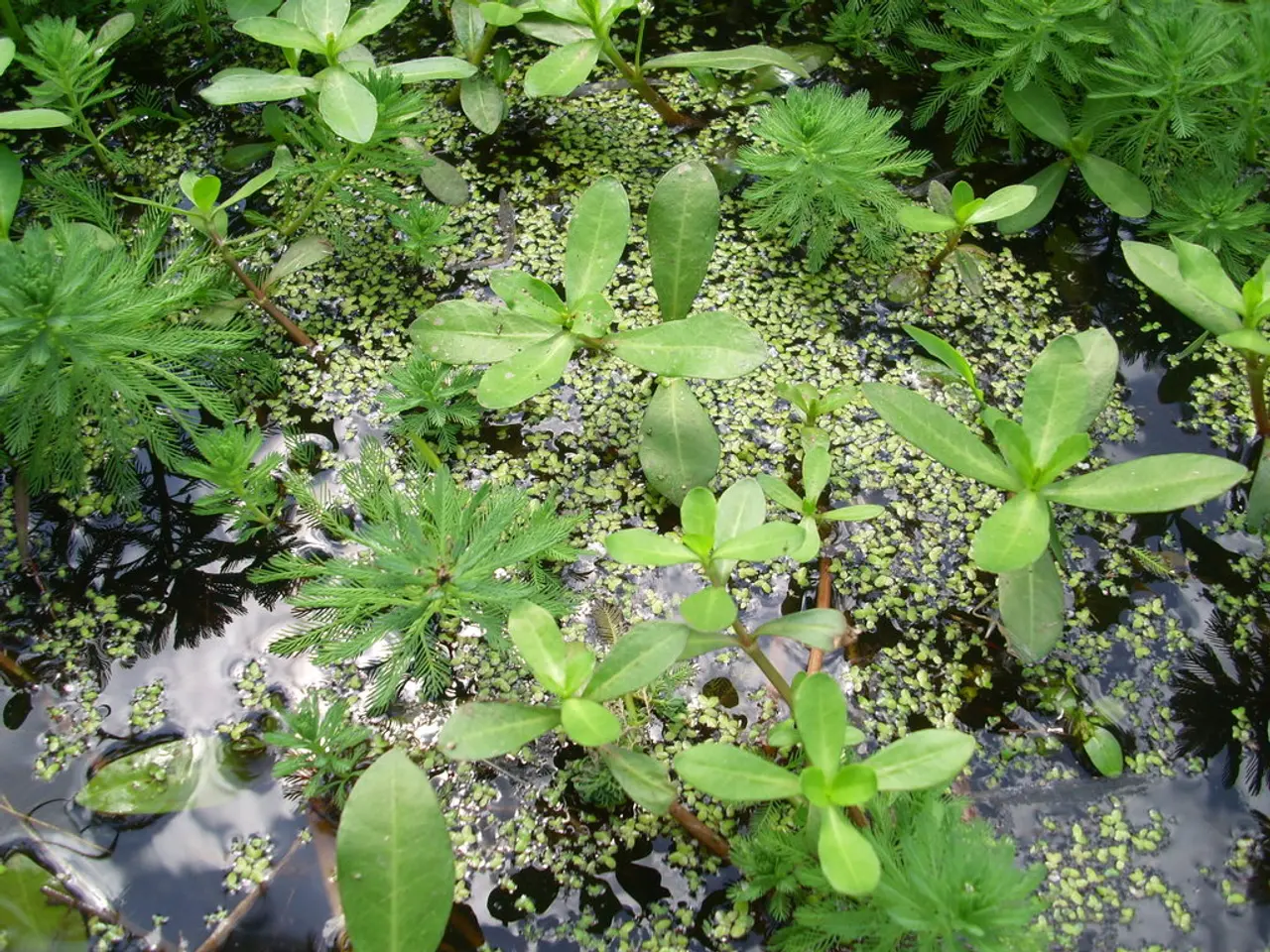Top Ten Vital Water Vegetation for a Vibrant Pond Ecosystem
In a bid to create a thriving and balanced aquatic environment, incorporating the right selection of aquatic plants is essential. Here are ten ideal plants, each offering unique benefits to a pond ecosystem.
1. Pickerelweed (Pontederia cordata) - An emergent plant that grows at the pond's edge, providing food and habitat for various aquatic organisms, such as waterfowl, bees, butterflies, and dragonflies. Its vibrant flowers add a touch of vertical interest to the pondscape.
2. Lizardtail (Saururus cernuus) - An adaptable emergent plant that thrives in shaded pond edges and controls erosion, contributing to the overall biodiversity of the pond.
3. White Water Lily (Nymphaea odorata) - A floating plant that offers shade to reduce algae growth, provides habitat and food for aquatic insects and waterfowl, and adds an iconic aesthetic to the pond.
4. Water Hyacinth - A popular floating plant that shades the water surface, reduces algae, and absorbs excess nutrients, making it easy to maintain, especially in hot weather.
5. Water Lettuce (Pistia stratiotes) - Similar to water hyacinth, water lettuce helps control algae growth, improves water clarity, and provides habitat for fish and other aquatic organisms.
6. Hornwort (Ceratophyllum demersum) - A submerged plant that oxygenates the water, provides underwater habitat for fish, and helps maintain water clarity by absorbing nutrients.
7. Vallisneria (Vallisneria americana) - A submerged plant that oxygenates the pond, shelters fish and invertebrates, and stabilises sediment.
8. Anacharis - A submerged plant that acts as an oxygenator and nutrient absorber, improves water clarity, and provides fish habitat.
9. Iris (various species) - Marginal plants that stabilise the pond's edge, provide shelter and spawning grounds for aquatic life, and add colour to the pondscape.
10. Cattails - Marginal plants that help filter nutrients, provide shelter and nesting sites, and stabilise the soil to prevent erosion.
These plants offer numerous benefits to a pond ecosystem, including oxygenation, nutrient uptake, habitat and shelter provision, erosion control, shade and temperature regulation, and aesthetic appeal. By carefully selecting a combination of emergent, submerged, floating, and marginal plants suited to your pond's size, depth, and climate, you can create a self-supporting, biodiverse pond ecosystem that supports aquatic life balance and water quality.
Additional plants to consider include Papyrus (Cyperus papyrus), which provides habitat for fish and other aquatic organisms, and Duckweed (Lemna minor), which helps control algae growth and improves water clarity.
When designing a balanced home-and-garden ecosystem, it's crucial to include pets, such as aquatic life, in the consideration. Adding a variety of plants like Pickerelweed, Lizardtail, White Water Lily, and Cattails can offer them suitable habitats and food sources. Furthermore, these plants, along with others such as Papyrus and Duckweed, can contribute to the aesthetic appeal of your home-and-garden lifestyle while maintaining a healthy and thriving aquatic environment.




